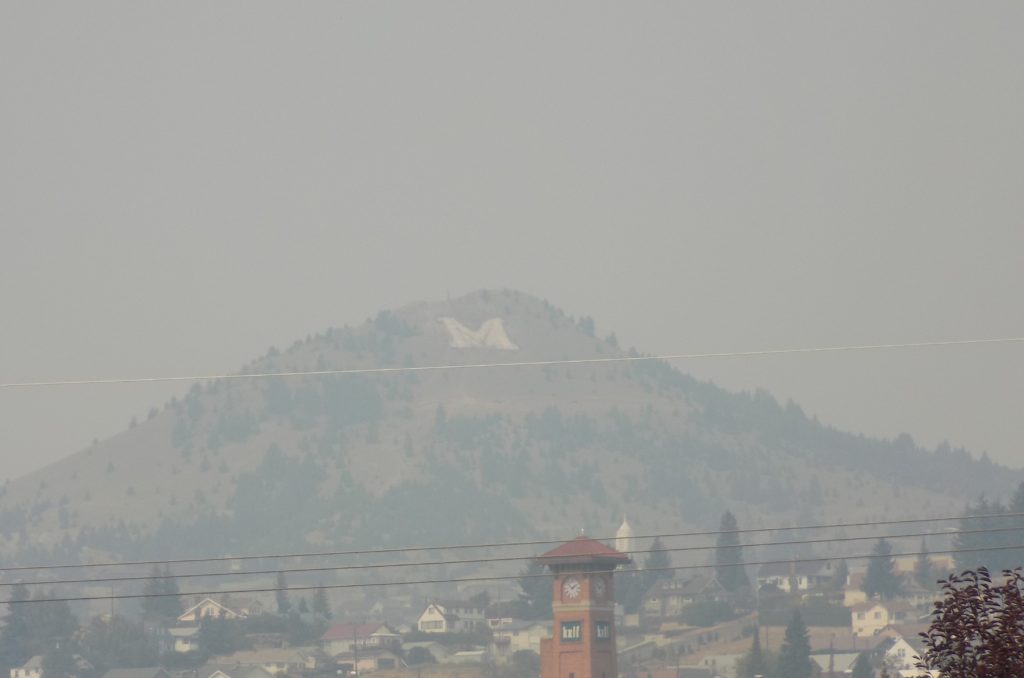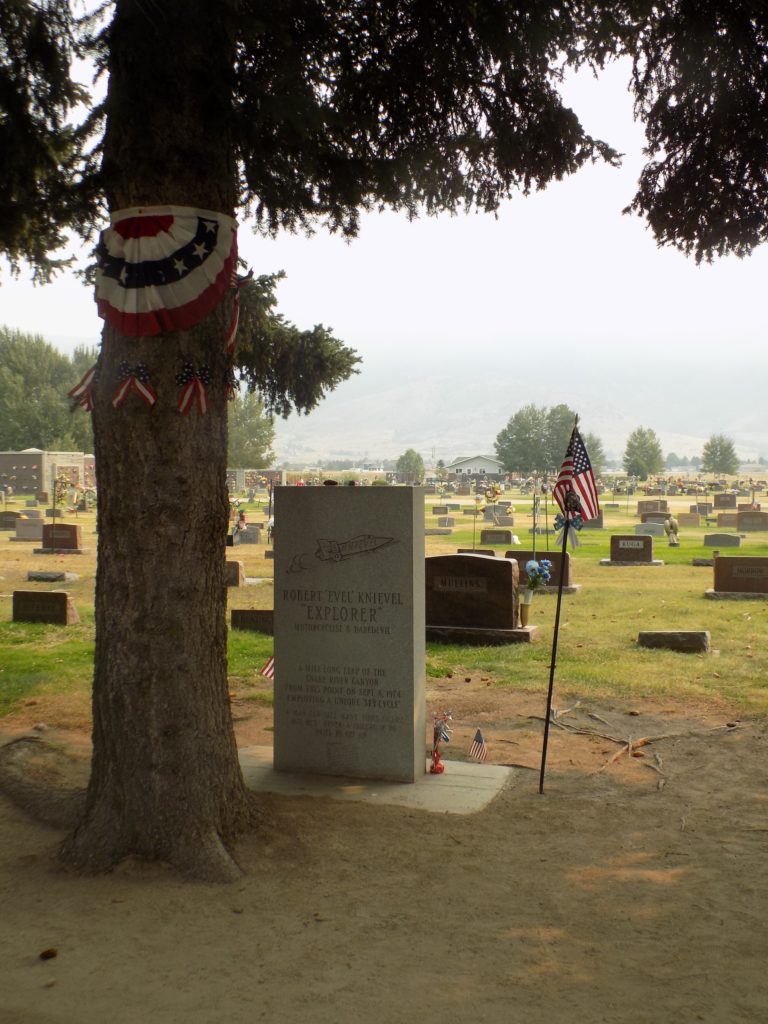I’m not certain whether I should count the ghost towns and the ringing rocks as a pair of missed sights or as three of a kind. Or whether the only one that I should really count as missed is Nevada City since I chose to fold on the two others. Regardless of the classification, I could only hope that my next stop would hand me a better deal and at least meet my expectations.
Butte-ing in.
It’s a short drive from Whitehall to the city of Butte and, arriving in a city that in 2017 has a population of about 34,000, it’s a bit difficult to imagine that at the turn of the 20th century, Butte was the largest city between Chicago and San Francisco. The city was named for this
hill that miners called Big Butte. Curiously, the land form doesn’t seem to me to qualify as a butte. (I took this picture because Butte is home to the University of Montana Montana Tech Campus and I wanted to evoke a link from this ‘M’ to the University of Arizona’s A Mountain in Tucson. I want to note that, as dusky as it appears, it was between 15:30 and 16:00 when I took this photo – about four hours before sunset. The haze was truly thick and persistent. In fact, as I traveled west, this was the day I began hearing Air Quality Index warnings in the news and weather reports. In Butte {which you can see above}, the air quality was reported as Unhealthy for Sensitive Groups. In Missoula, where I’d spend the night, it was Very Unhealthy and in the Flathead Valley near Glacier National Park, tomorrow’s destination, the AQI was Hazardous. The photo below from Montana Right Now, closer to Big Butte but taken from a similar angle, provides a reasonable air quality comparison.)
As for the question I posed in today’s headline, according to no less august a source than the National Geographic Society,
Buttes are tall, flat-topped, steep-sided towers of rock. Buttes were created through the process of erosion, the gradual wearing away of earth by water, wind, and ice.
Buttes were once part of flat, elevated areas of land known as mesas or plateaus. In fact, the only difference between a mesa and a butte is its size. Most geographers say a butte is taller than it is wide, while a mesa is a much larger, slightly less elevated feature.
Buttes are created as streams slowly cut through a mesa or plateau. The hard top layers of buttes, called caprock, resist weathering and erosion. As a result, the formations stay about the same height as the original plateau or mesa.
Weathering and erosion, most often by wind and rainwater, slowly erode the softer rock surrounding the caprock. Caprock protects the more vulnerable rock beneath it. Buttes slowly become slender spires.
Eventually, even the caprock falls prey to severe weathering and erosion. Debris that falls to the side of buttes is called scree or talus.
Buttes usually form in arid regions, such as those in Mexico and the southwestern United States.
I guess, Big Butte has a nicer ring to it than Big Hill. something this formation appears to be.
A little less Evel in the world.
Before I got around to taking a picture of the M, I had, in fact, made several other stops in Butte. The first of those was the grave of Robert Craig Knievel, Jr. who, later in life officially changed his name to Evel Knievel. According to his official biography, when he was 18, he crashed his motorcycle during a police chase and was taken to jail after being charged with reckless driving. Then,
When the night jailer came around to check roll call, he noted Robert Knievel in one cell and William Knofel in another. Knofel was well known as “Awful Knofel” (“awful” rhyming with “Knofel”) so Knievel began to be referred to as Evel Knievel (“Evel” rhyming with “Knievel”). He chose this misspelling because of his last name and because he didn’t want to be considered “evil”.
Knievel, of course eventually became known for his death defying daredevil feats on his motorcycle. He self-promoted his early shows before finding a sponsor, Bob Blair, owner of ZDS Motors, Inc., the West coast distributor for Berliner Motor Corporation itself a distributor for Norton Motorcycles. Blair provided the motorcycles and helped promote a show that came to be called Evel Knievel and His Motorcycle Daredevils.
Many of us who came of age in the U S in the 1960s and 1970s will harbor fine memories of an ABC television show called the Wide World of Sports.
In the days before cable television and the internet, this sports show was a weekend fixture that was revelatory in exposing Americans to “the constant variety of sport.”
Ever the showman and promoter, Knievel, who is the Guinness Book of World Records holder for most bones broken, frequently appeared on this august series. In fact, when the show compiled a list of its most watched events, four of Knievel’s jumps made their top twenty.
After several of his famous Caesar’s Palace Jumps, Knievel concocted a plan to jump the Snake River Canyon in Idaho in September 1972. ABC was unwilling to pay Knievel’s asking price so he found another promoter who agreed to put it on closed circuit television (another relic of a bygone era in broadcasting that anticipated the idea of pay-per-view except that for this type of broadcast people had to go to movie theaters to see the event). Knievel’s attempt failed when the parachute deployed too early and the drag pulled him back to the floor of the canyon on the same side of the river as his launch.
Five years later, in January 1977, Knievel retired after a failed attempt to jump a tank full of sharks. (This might have been presciently ironic given that, in September of that year, the character Fonzie would make a water ski shark jump that would give rise to the pejorative idiom “jumping the shark.”) Although Knievel wasn’t badly injured in the crash, the collateral injury to a cameraman prompted his ultimate retirement (he’d announced his retirement several times before that).
Knievel died in 2007 in Clearwater, Florida but his body was returned to his hometown of Butte where he was buried in a modest grave in the Mountain View Cemetery following a service that was held in the city’s 7,500 seat Civic Center.
I hope you won’t find the coming posts as disastrous as the events or sights they describe.


